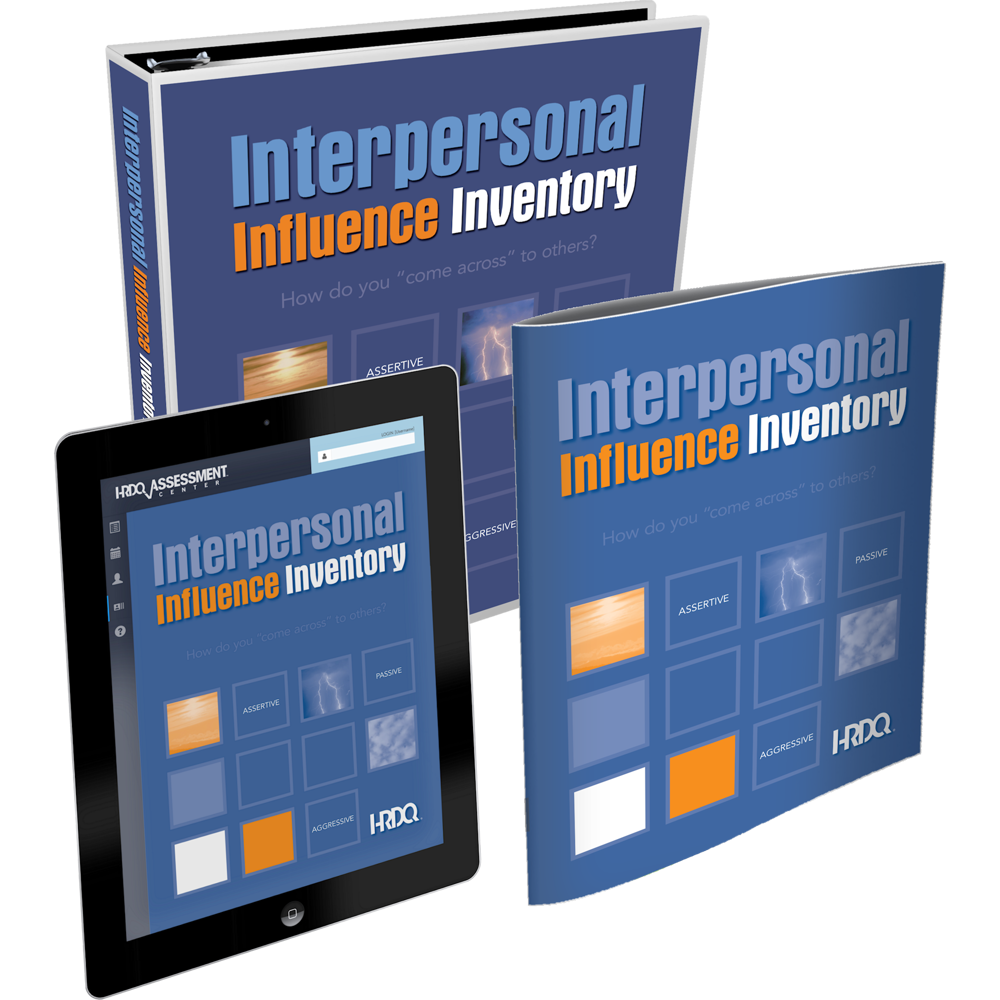The Trainer's Secret Weapon: Why the Interpersonal Influence Inventory Remains a Timeless Classic
In the bustling world of corporate training, where new methodologies emerge faster than you can say "synergy," there exists a rare breed of assessment tool that has stood the test of time.
The Interpersonal Influence Inventory has quietly earned its place as a trainer's classic, not through flashy marketing or trendy buzzwords, but through something far more valuable: genuine, transformative results.
Picture this scenario: You're facilitating a leadership workshop, and halfway through the session, you notice that familiar glazed look creeping across participants' faces. The theory is sound, the slides are polished, but something crucial is missing - that spark of personal recognition that transforms abstract concepts into actionable insight. This is precisely where the Interpersonal Influence Inventory works its magic, breathing life into what might otherwise be another unforgettable training session!

What makes this assessment tool so enduringly popular amongst seasoned facilitators is its remarkable ability to hold up a mirror to participants' natural influence patterns. Unlike many assessments that feel academic or detached from reality, the Interpersonal Influence Inventory cuts straight to the heart of how we actually show up in our daily interactions. It doesn't just tell people what they already know about themselves; it reveals the unconscious patterns that drive their behaviour in moments of pressure, negotiation, and leadership.
The genius of this inventory lies in its comprehensive approach to understanding influence through four distinct lenses: thoughts, emotions, nonverbal behaviour, and verbal behaviour.
This multi-dimensional perspective creates those powerful "aha moments" that every trainer dreams of facilitating. When a participant suddenly recognises why their well-intentioned feedback consistently triggers defensive responses, or why their negotiation style works brilliantly with some colleagues but falls flat with others, you've witnessed the inventory's transformative power in action.
For trainers working in leadership development, this tool becomes indispensable. It illuminates the nuanced ways individuals naturally attempt to guide, persuade, and motivate others. A senior manager might discover that their default directive approach, whilst effective in crisis situations, actually undermines team engagement during collaborative projects. This self-awareness becomes the foundation for developing more flexible, situationally appropriate leadership styles.
The inventory's versatility truly shines when addressing communication challenges within organisations. Rather than offering generic advice about "better communication," it provides specific insights into how different influence styles can either complement or clash with one another. When team members understand not just their own communication patterns but also recognise and adapt to others', the quality of workplace interactions improves dramatically.
In negotiation training, the Interpersonal Influence Inventory proves equally valuable. It helps participants understand their instinctive approach to finding common ground, whether they naturally lean towards collaborative problem-solving, competitive positioning, or relationship-building strategies. This awareness allows negotiators to consciously choose their approach rather than defaulting to patterns that might be counterproductive in specific situations.
Perhaps most importantly for conflict resolution work, the inventory provides a non-threatening framework for discussing interpersonal tensions. Instead of focusing on personality clashes or blame, conversations can centre on influence style differences and how these might be creating misunderstandings. This shift from personal criticism to style awareness often unlocks solutions that seemed impossible when the conflict was viewed through a more personal lens.
The beauty of weaving this assessment into various training contexts lies in its adaptability.
In a half-day communication workshop, it might serve as an opening activity that sets the stage for deeper exploration of interpersonal dynamics. For comprehensive leadership development programmes, it provides foundational self-awareness that participants build upon throughout multiple sessions. Team-building facilitators often use it to help intact groups understand their collective influence patterns and identify potential blind spots.
One particularly effective application involves using the inventory results as the basis for peer coaching partnerships. When participants understand each other's influence styles, they can provide more targeted feedback and support. A naturally collaborative influencer might help a more directive colleague recognise when their approach is creating resistance, whilst the directive influencer can help their collaborative partner understand when more decisive action is needed.
Sarah, a senior learning and development manager at a major financial services firm, reflects on her experience: "We've tried countless assessment tools over the years, but the Interpersonal Influence Inventory consistently delivers results that participants can immediately apply. Six months after our leadership programme, managers are still referencing their influence style insights when approaching difficult conversations or team challenges."
Similarly, David, an independent management consultant with over fifteen years' experience, notes: "What sets this inventory apart is how it connects personal insight with practical application. Participants don't just learn about themselves; they develop concrete strategies for adapting their approach based on the situation and the people involved."
The enduring appeal of this tool stems from its foundation in solid research whilst remaining accessible to participants regardless of their background.
The language is clear, the concepts are intuitive, and the applications are immediately obvious. This combination of rigour and accessibility makes it equally valuable whether you're working with front-line supervisors or C-suite executives.
What truly distinguishes the Interpersonal Influence Inventory from newer assessment tools is its focus on behaviour that can be observed and modified. Rather than exploring deep personality traits that feel fixed and unchangeable, it examines influence patterns that participants can consciously adapt and improve. This action-oriented approach aligns perfectly with the practical outcomes that modern training programmes demand.
For trainers and facilitators seeking tools that consistently deliver transformative insights whilst remaining practical and applicable, the Interpersonal Influence Inventory represents a wise investment. Its track record speaks for itself—thousands of professionals have used its insights to enhance their effectiveness and achieve better results in their influence efforts.
Ready to discover how this classic assessment tool can enhance your training programmes?
Experience the power of the Interpersonal Influence Inventory for yourself by visiting HERE and see why it remains an essential resource in every effective trainer's toolkit!